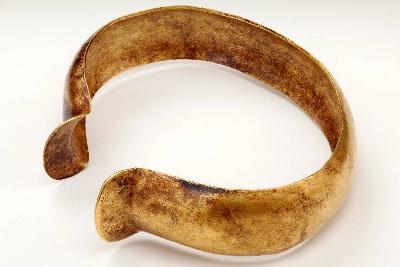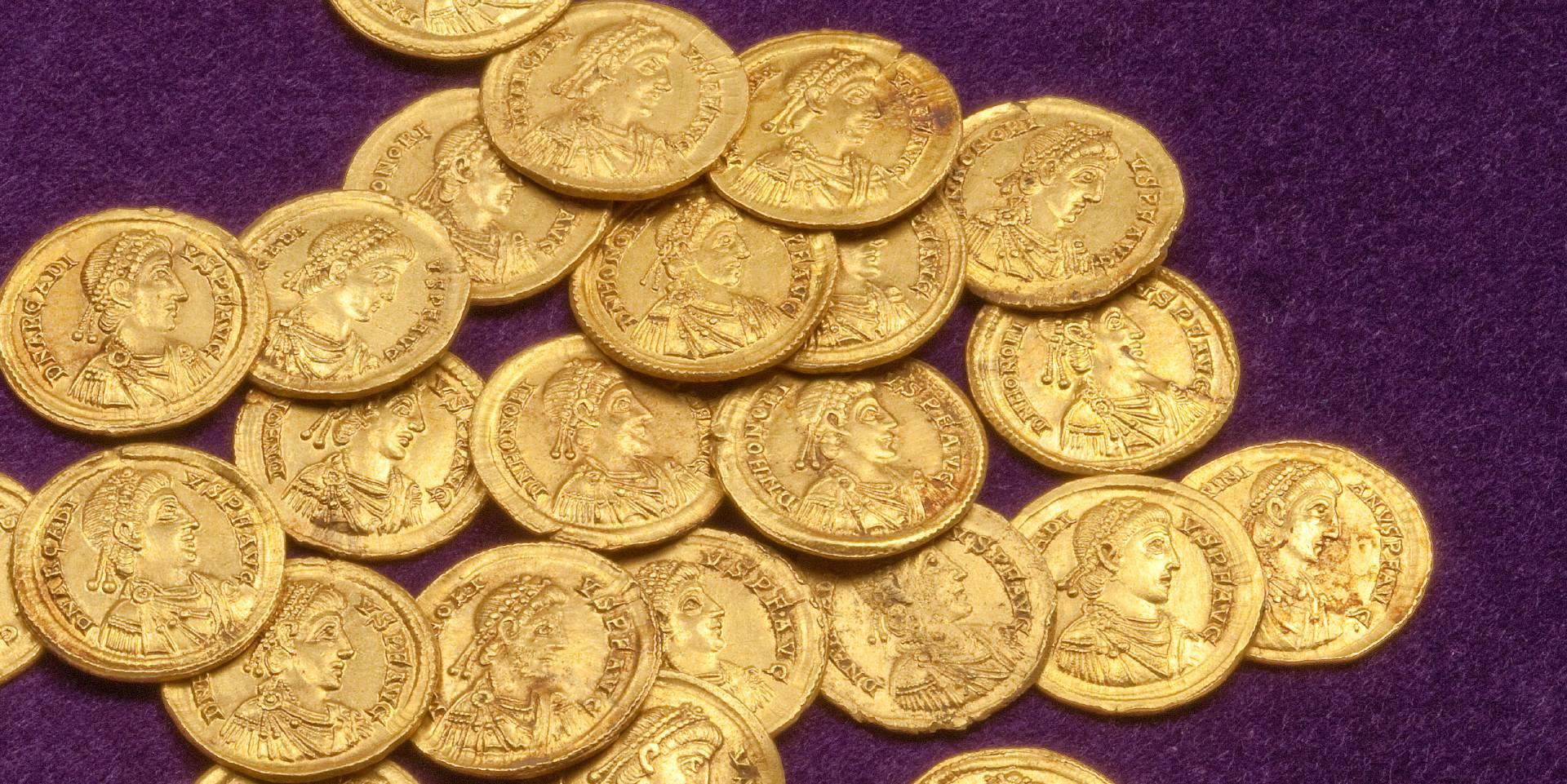Archaeology collections
Norfolk Museums' archaeology collections are a nationally significant resource that tell the story of the county from the earliest species of humans through to the Early Modern period. We also have fine associated collections of Numismatics (coins and tokens), Egyptology and Ethnography.

In addition to stray or isolated finds donated by members of the public since the 1820s, the Service acts as the repository for archives of excavation carried out within the county, both from modern commercial organisations, and from many research projects. Our collections are used to form the basis of permanent displays in three galleries at Norwich Castle looking at the Prehistoric and Roman periods, the Anglo-Saxon and Viking Age, and in a new gallery of the Medieval world, currently being developed in partnership with the British Museum.
Our collections are strong in all chronological areas and provide a major resource for loans to temporary exhibitions internationally, for academic research projects and to our local community. We work alongside a number of universities as well as many local societies and enthusiast groups. Today we also work closely with the large number of metal-detectorists in the county, via Norfolk's Identification and Recording Service who operate the Portable Antiquities Scheme in the county. We work to conserve, document and publish our collections, making these important artefacts available to all and are always keen to hear of new discoveries of finds and sites by the public.
Among the highlights of our collections are:
- Finds excavated from Lynford Quarry in which the remains of butchered mammoth bones were found associated with stone tools made by human ancestor species, the Neanderthals, dating to 64,000 years ago
- The preserved Bronze Age timber circle popularly known as Seahenge, constructed in 2049BC at Holme on the north Norfolk coast
- Iron Age gold and silver torcs, or neck rings, worn as powerful statements of wealth and status by the members of the local Iceni tribe, including examples from the internationally-famous site at Snettisham
- The largest collection of Anglo-Saxon runic inscriptions outside the British Museum
Talking objects: Gold pendant cross
Curator of Archaeology, Dr Tim Pestell, introduces a medieval pendant cross from our Archaeology collections.
Timeline
Circa 500,000 BC

The Happisburgh Handaxe - This is the earliest known handaxe found in Britain and, when originally discovered in 2000, was the oldest known human-made object in all of northern Europe.
Circa 1,500 - 1,350 BC

The Rudham Dirk - This is a very unusual example of a pre-historic stabbing weapon known as a dirk. However, this extremely large example was made for ceremonial rather than practical reasons, suggested by the deliberate bending of the blade. It was probably buried on purpose.
Circa 1,100 - 1,000 BC

The Sutton Shield - Despite the great craftsmanship invested in this magnificent shield, it is a delicate item. It would not have withstood repeated strong blows from weapons during combat and its principal use must have been ceremonial. It must have been a possession of high prestige, reminding us of the link between success in warfare and power.
Circa 950 - 750 BC

Penannular gold bracelet - This stunning object is part of a hoard seven penannular gold bracelets found in central Norfolk. Together they comprise one of the most spectacular discoveries of prehistoric metalwork from the county.
Circa 250 - 200 BC

The Shouldham Sword - The Shouldham sword is a short-bladed weapon, belonging to the middle Iron Age period, some three centuries before the Roman invasion of Britain. It was reported as having been placed on the chest of a skeleton when found, although no evidence for this observation has survived.
Mid-first century AD

Drinking cup from the Crownthorpe Hoard - This magnificent cup is one of a matching pair, found as part of a hoard in central Norfolk. The cups are overtly Roman in form, while their handles are decorated with birds rendered in characteristic Celtic style. They were deliberately hidden in the ground at the time when the Iceni tribe rose in arms against the Romans, under the leadership of Queen Boudica.
Circa 60 - 150 AD

The Billingford Lamella - A lamella was a very rare form of amulet or charm, made from a thin sheet of silver or gold, on which was inscribed protective spells. It was then rolled-up to contain the magic and worn around the neck. This example, found in central Norfolk, is only the fifth such gold example ever to be recorded from Roman Britain.
500 - 600 AD

Spong Man - 'Spong Man' is the earliest Anglo-Saxon three-dimensional figure ever found. It is a decorative pot lid, which fitted into the neck of a cremation urn. The image might have been intended to represent the person buried inside the pot.
850 - 925 AD

Thor's Hammer - Thor was the most powerful of the Norse gods, representing strength, as the god of thunder and lightning. Viking warriors wore miniature representations of Thor's hammer around their necks for good luck. The Vikings invaded East Anglia in 866, when they returned in 869, they killed King Edmund of East Anglia. In 878 King Alfred made a treaty which gave East Anglia to the Danish chieftain Guthrum.
11th - 12th century

Thetford ware pot - This simple plain grey pot represents one of the great archaeological indicators of trade, exchange and economic wealth in Norfolk during the period in which Norwich rose to pre-eminence and became the county town. Thetford ware is a hard, well-fired pottery that was mostly produced on a fast potter's wheel.
Circa 1422

The Helmingham Breviary - A breviary is a daily service book, used by monks and priests. This example was made for use in the Diocese of Norwich. By the late medieval period Norwich was the main city in East Anglia and was ranked only just below London in terms of national importance.
1573 - 1589

Seal matrix of Norwich Cathedral Dean and Chapter - Seal matrices were employed to ensure the authenticity of documents. The centre of this one was possibly deliberately damaged as a result of the abolition of the Dean and Chapter of Norwich Cathedral between 1649-60 as the more rigorous Protestantism of the Commonwealth took hold.







